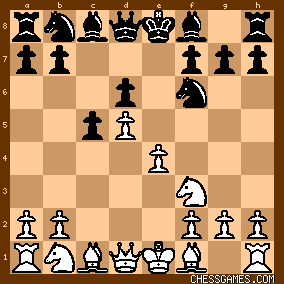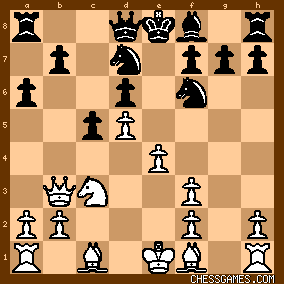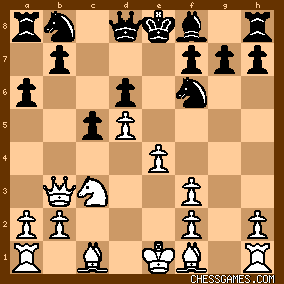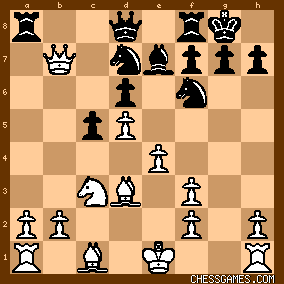|
< Earlier Kibitzing · PAGE 412 OF 914 ·
Later Kibitzing> |
Sep-03-12
 | | playground player: <Phony Benoni> A bunt single for Ted Williams in the third inning--in the World Series, no less. I wonder if the Cards had put the Williams shift on. Some of the teams used to put on a shift for me, in our local softball league. When you're going good, it doesn't matter what they do. When you're going bad, it doesn't matter what you do. |
|
| Sep-03-12 | | Jim Bartle: If Mays bunted twice in 1965, it must have been in situations where one run would win the game. He did have McCovey and Hart batting after him, real power hitters. Bill James passed along a story about Aaron bunting, from the mid-fifties. He squared to bunt early against Brooklyn, and third baseman Jackie Robinson didn't even move. Afterward Aaron asked Robinson why not, and he answered, "Henry, any time you want to bunt that's fine with us." |
|
Sep-03-12
 | | Phony Benoni: Here are the two Mays bunts from 1965:
http://www.retrosheet.org/boxesetc/... 6th inning, tie game against the dangerous New York Mets. Hal Lanier leads off with a double, and Mays bunts him to third. The next hitter is Jay Alou (!?), but he knocks in Lanier anyway. The game is probably more remarkable as the debut of Tug McGraw. http://www.retrosheet.org/boxesetc/... Oddly similar situation: 6th inning, down 1-0 to the Phillies. This time it's Matty Alou leading off with a double, and Mays bunts him to third. Might not be a bad idea with Jim Bunning pitching. McCovey is up next, and the Phillies execute a strange shift by moving their third baseman to short, the shortstop to first, and the first baseman to third. Also understandable, since the first baseman is Dick Stuart; with McCovey up, the manager risks being charged with negligent homicide if he doesn't do something like that. McCovey scores the run with a sacrifice fly, and the Phillies eventually win. |
|
| Sep-03-12 | | Jim Bartle: Jesus Alou was sometimes called "Jay" in the US, because for some reason some people think "Jesus" is offensive. But it's a common name in Latin America. What an irrational lineup for the Giants in that first game: Kuenn, Lanier, Mays, Jesus Alou, Hart, McCovey, Pagan, Haller. Lanier couldn't hit at all (I have my doubts he really hit a double), Alou had no business hitting ahead of McCovey and Hart, nor Hart before McCovey (except maybe Jackson was tough for McCovey), nor Pagan before Haller. |
|
Sep-03-12
 | | Phony Benoni: Al Jackson was left-handed, but McCovey hit him well: .314 average and 6 HRs in just 35 ABs. Jesus Alou did really well against him, with a .378 average. It was an early April game, and there may have been some experimenting going on. |
|
| Sep-03-12 | | Tal7777777: Sorry. |
|
| Sep-03-12 | | Jim Bartle: PB: I wonder how much they followed who hit who or couldn't hit this guy back in the 60s. If Franks knew Alou could hit Jackson the way he did that day, then good for him. It still looks awfully strange to see Alou hitting between Mays and McCovey. One of the reasons the Giants couldn't win in the second half of the 60s is that Jesus Alou and the other corner outfielders just didn't hit enough n(Len Gabrielson was OK for a while), along with the middle infielders. So they in effect had a four-man offense. Then by the time they got Bobby Bonds and Ken Henderson out there, Mays was fading badly. |
|
Sep-03-12
 | | WannaBe: From ESPN.com, J. Verlander and M. Scherzer leads AL in K's, if that holds up, they will be the sixth pair of teammates to finish 1-2. Who are the other 5* paris? For answer: http://espn.go.com/mlb/story/_/page... *One pair did it twice. Back-to-back season. |
|
| Sep-04-12 | | Jim Bartle: Before looking, my guesses would be Koufax-Drysdale, Ryan-Tanana and McLain-Lolich. |
|
Sep-04-12
 | | WannaBe: Tonight is B. Lee Day at AT&T Park, so in honour of Bruce: Waaaaaaaaa! Chop Chop Chop Kick Kick Round-House, Kick Chop Chop, Waaaaaaaaaa!! |
|
Sep-04-12
 | | Phony Benoni: As opposed to G. Lee night, which features teenage angst and happy endings. |
|
Sep-06-12
 | | perfidious: Lay your money down on this classic matchup, Savannah State-Florida State, but check out the line: FSU is -70.5, largest spread in CFB history. http://www.cbssports.com/collegefoo... |
|
Sep-06-12
 | | Phony Benoni: <perfidious> Take the points. I understand that Savannah State is going to use the four corners offense to slow down the game. |
|
Sep-06-12
 | | OhioChessFan: Maybe they will pass out a lot of cookies along the Florida State sideline. |
|
Sep-06-12
 | | perfidious: <Phony Benoni> If I were a bettor on CFB, I'd almost have to take that line, even with the potentially killing half-point affixed to the end.
It's bloody huge. |
|
| Sep-07-12 | | BadKnight: Hey <Phony Benoni>, i am an amateur enthusiast, a proud member of the cg team on gameknot. i recently won a benoni game with black. i am not experienced with benoni. it was probably my first ever benoni game. just wondering if i could your feedback on the game about how i did. |
|
Sep-07-12
 | | Phony Benoni: <BadKnight> We can give it a shot, but don't expect much. I don't play or do a lot of analysis these days. However, you have found my soft spot. |
|
| Sep-07-12 | | BadKnight: okay, my games are probably not worth very deep analysis anyways, i am expecting comments on the obvious or may be not so obvious ideas. I will soon post my game with light annotation. |
|
| Sep-07-12 | | BadKnight: I have won a game with black. :) Probably my first ever benoni game in my life. My opponent went for early pawn grab with queen on b7 which i considered risky for him. He lost a piece in ensuing complications and then resigned later. I would love to have insights on the game from any resident benoni player. [Event "Team match"]
[Site "http://gameknot.com/chess.pl?bd=179..."]
[Date "2012.08.29"]
[Round "-"]
[White "pawnegalitarian"]
[Black "h8dgeh0g"]
[Result "0-1"]
[WhiteElo "1738"]
[BlackElo "1752"]
[TimeControl "1/432000"]
[Mode "ICS"]
[Termination "normal"]
1. d4 Nf6 2. c4 e6 3. Nf3 c5
white avoids nimzo indian, so i though i will give benoni a shot.
4. d5 exd5 5. cxd5 d6 6. e4

click for larger viewFirst interesting point in the game. white plays an early e4 without Nc3. I was trying to learn the move order nuances as i was playing, and i started wondering if something had aleady gone wrong. the obvious tactical point of the move is that 6...Nxe4 fails to 7.Qa4+, so that is out of the question. but i got worried about the long term strategic problems that the move creates in the black camp. the point being white threatens to omit Nc3 altogether and play Nd2-c4 and Bf4 with an accelerated attack on d6, and the stat in this line is scary. a quick database search reveled that the usual g6-Bg7 plan is too slow to handle this, so i had to change my plan. i was not sure what to do, so i wanted to eliminate the knight on f3, so... 6...Bg4 7. Nc3 a6 8. Qb3 Bxf3 9. gxf3 Nbd7

click for larger viewanother critical moment. i think i was out of book by this time. i offered the pawn on b7 to black. the resulting position is too complicated for me to be able to calculate anything, so i just wanted to give it a shot. i thought pawn grab on b7 should be risky for white. if things go in my favor i can chase the white queen all over the board with accelerated development. so... 10. Qxb7 Be7 11. Bxa6 O-O 12. Bd3 Ne5 13. Ke2 Nfd7 14. Nb5 this is probably decisive mistake, i think now white loses a piece by force. 14...c4 15. Bc2 Rb8 16. Qa6 Nc5 17. Qa3 Rxb5

click for larger viewafter this i just wanted to make sure that i am able to keep things under control. i felt i should win if "nothing happens", so there was no need to go crazy. 18. Rd1 Qd7 19. Be3 Rfb8 20. Rab1 Qb7 21. Bxc5 Rxc5 22. f4 Ra8 23. Qh3 Ng6 24. Qe3 Rxa2 0-1 here my opponent resigned. |
|
Sep-07-12
 | | Phony Benoni: <BadKnight> Don't know if I can give you any real analysis. After all, my GameKnot rating is only 1625. OK, I'm probably a bit stronger than that because I resigned quite a few games when I needed to quit playing for a while, but still... The position after <6.e4> is indeed interesting: 
click for larger viewMy first instinct was <6...a6>. The idea of quick queenside expansion with ...b5 generally provokes a reflexive a2-a4 in response, but White can't do that here without hanging the e-pawn. So I checked the Opening Explorer, and found that 6...a6 invariably gets squashed after 7.Bd3. I glanced at the games, and though I'm not completey convinced by White's play I can see what happens. Pushing the queenside pawns is good for Black if he can keep pushing them, knocking White's pieces out of the way and opening squares for his. White's knight on c3 is often in harm's way, so not having it there makes it easier to first blockade the pawns, then weaken them. I see also (as you undoubtedly did) that the clear recommendation is 6...Bg4. This also makes sense; since Black's weakest point is d6, he's trading a piece that can't defend it for one that can attack it. In fact, in the 6...a6 7.Bd3 lines, White invariably plays to quick h2-h3 to stop the pin. When White plays 7.Nc3, we're back into normal lines. After 8.Qb3 you pretty much have to trade on f3, and after 8...Bxf3 9.gxf3 we get to your second position: 
click for larger viewAgain, my brain immediately plays 9...b5. Were you afraid of 10.a4? Now you can kick the knight with 10...b4. True, it can maneuver to the hole on c4, but you have time to counter by moving a knight to b6. Nor is Bf4 much of a threat, since you have ...Nh5 available. That's probably what I would play, but I concede it may be premature. Instead, I don't see a big problem with 9...Qc7 instead. After 10.Qa4+ Nbd7 11.Nb5 Qd8, White's pressure dissipates. The main point is that I don't know if the pawn sacrifices are justified, despite the cliches. Yes, White ends up wasting four moves taking the pawns, but what is Black doing with those moves? Developing pieces, to be sure, but he doesn't have any immediate threats everywhere. The problem with White's position is not that he's open to a quick sacrificial attack, but that his central pawn position is in danger of being frozen, trapping his pieces. As the game goes you can see this happening. So I think Black should have proceeded more slowly and positionally. <12.Bd3> reveals an interesting psychological point: 
click for larger viewRetreating the bishop is a good idea, but obviously 12.Be2 would have saved a tempo. After 12...Ne5, White should still play 13.Be2, but that's hard to do because he would be admitting he made a mistake. You would be amazed at how many blunders are caused by this psychological phenomenon. Not that 14.Ke2 looks like that big of a blunder. White probably thought that castling on either side was dangerous, so he might as well keep the king in the center. But White's plan in this position involve pushing the center pawns. With his king stuck there, he will be reluctant to do that. There's not much else to say. We're out of the opening, and as you note 14.Nb5 is just a piece-losing blunder. White needed to consolidate, then free his position, while Black would probably have to proceed in Benko Gambit style. If you usually play the Nimzo, you know how to freeze those pawns. White could have gotten a third pawn for the piece. After it goes, Black has an excellent position--don't you just love those knights on c5 and e5?--and White never does break out of his box. I guess I've been overly lengthy after all. I think the only criticism I would make is the pawn sacrifices with 9...Nbd7. They might be justifiable, but I don't think they're necessary because Black's advantage was largely positional, not tactical. |
|
| Sep-08-12 | | BadKnight: thanks for the detailed and reply. as i mentioned before, i am not used to playing the benoni or benko or KID or the likes with the backward pawns on d6, i do not have a natural feeling for the resulting positions, so it was a real challenge for me to willingly go into the benoni lines. in offhand blitz games when i try these sophisticated lines i usually get slaughtered in the opening, and fail to get a reasonable game. i usually transpose into QGD or Ragozin or similar lines where i can survive the opening with my instinct. against e4 i used to havve problems with the sicilian lines with the early move order tricks, but over the years i think i have got a hang of the sicilians, but i still have huge problems with the d4 sharp lines.when i try, i *feel* that the grunfeld is completely wrong for black, although i know its actually quite a healthy opening. it just does not work for me yet. during the game i thought 6...g6 followed by Bg7 would be a mistake, 6...a6 would be an alternative to 6...Bg4. if i play 6...a6, in many lines white might play h3 before i get to play Bg4, so the game will go in different direction. so i think it was a matter of taste to pick either move. in case i played early a6-b5, i was not scared of a4. rather i thought without the knight on c3, i am lacking the option of playing b4 with tempo. about sacking the pawn on b7, i did not think that it would be completely sound. i thought 9...b5 or 9...Qc7 would be okay to play. i knew some benoni games where early pawn grab on b7 is considered risky to play for white [not the game position, but somewhat similar. i will try to find such a game in the database]. so 9...Nbd7 is probably not objectively justified. it was rather a psychological ploy. i was like, you dare grab the pawn on b7, then i will see you, and he followed suit. i understood black does not have anything concrete in compensation except a few tempi and open lines against the queen, which is that i wanted. or if there was anything concrete it was beyond me. so, the decision to sack the pawns is a bit of a gamble i would say. i just checked the pawn grab with fritz 12, stockfish and houdini, and they all say white stands better after 10.Qxb7, although the evaluation numbers vary by a large margin. fritz/stockfish says white is about <+1.5to 2.0> range better, whereas houdini says its ~+0.7...although centipawns don't mean much at our level, houdini's evaluation indicates that there is a bit compensation for the sacrificed material. i am using these numbers as a justification of my play. :D further justification comes from the fact that in the later part of the game my opponent did not play well..12.Bd3, 13.Ke2...talk about psychology. on a serious note, the pawn sacrifices are probably not completely sound, and i did not have to do that. in some correspondence games before i willingly went into some not-so-sound gambit lines thinking that i have plenty of time to prove this gambit wrong, only to take beatings after a tactical accident. but this time i was winner. all well that ends well. and i guess it has gone lengthier than i had expected. apologies. |
|
Sep-08-12
 | | Phony Benoni: If you gave that 70.5 points in the Florida State game, you may have something to worry about. The Seminoles have missed an extra point, and lead by only 48-0 with four minutes left in the first half. |
|
Sep-08-12
 | | OhioChessFan: The score has been posted as 55-0 in the 3rd quarter for 20 minutes now. I have to think weather has stopped the game. |
|
Sep-08-12
 | | Phony Benoni: Game called midway during the third quarter with the score at 55-0 due to severe weather; there had already been two prior stoppage. They were playing the second half with a running clock, but still couldn't get it in. I take it all bets are off? |
|
Sep-09-12
 | | OhioChessFan: It's good!
http://www.youtube.com/watch?v=MREK... |
|
 |
 |
|
< Earlier Kibitzing · PAGE 412 OF 914 ·
Later Kibitzing> |
|
|
|





